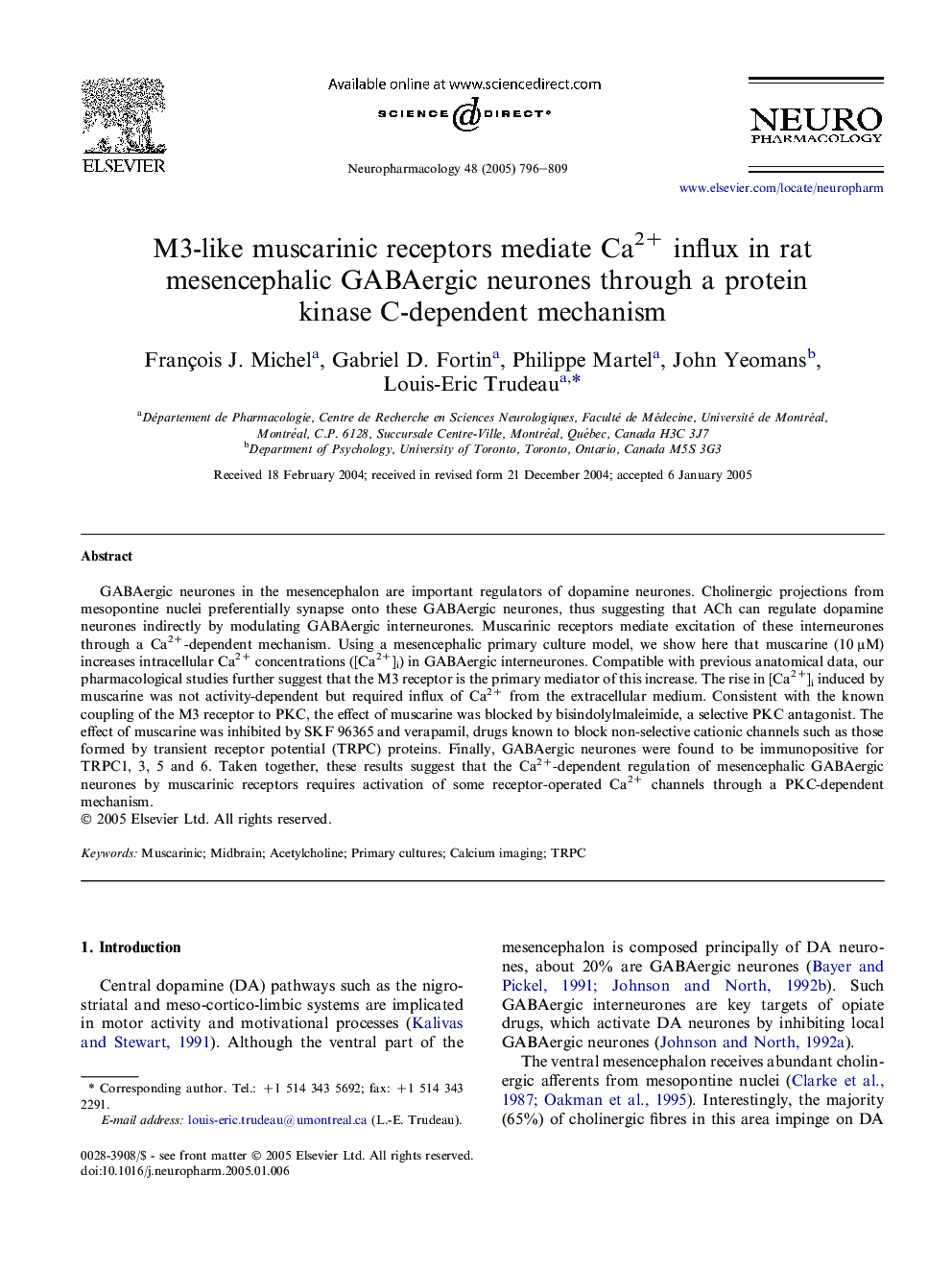| Article ID | Journal | Published Year | Pages | File Type |
|---|---|---|---|---|
| 8998503 | Neuropharmacology | 2005 | 14 Pages |
Abstract
GABAergic neurones in the mesencephalon are important regulators of dopamine neurones. Cholinergic projections from mesopontine nuclei preferentially synapse onto these GABAergic neurones, thus suggesting that ACh can regulate dopamine neurones indirectly by modulating GABAergic interneurones. Muscarinic receptors mediate excitation of these interneurones through a Ca2+-dependent mechanism. Using a mesencephalic primary culture model, we show here that muscarine (10 μM) increases intracellular Ca2+ concentrations ([Ca2+]i) in GABAergic interneurones. Compatible with previous anatomical data, our pharmacological studies further suggest that the M3 receptor is the primary mediator of this increase. The rise in [Ca2+]i induced by muscarine was not activity-dependent but required influx of Ca2+ from the extracellular medium. Consistent with the known coupling of the M3 receptor to PKC, the effect of muscarine was blocked by bisindolylmaleimide, a selective PKC antagonist. The effect of muscarine was inhibited by SKF 96365 and verapamil, drugs known to block non-selective cationic channels such as those formed by transient receptor potential (TRPC) proteins. Finally, GABAergic neurones were found to be immunopositive for TRPC1, 3, 5 and 6. Taken together, these results suggest that the Ca2+-dependent regulation of mesencephalic GABAergic neurones by muscarinic receptors requires activation of some receptor-operated Ca2+ channels through a PKC-dependent mechanism.
Related Topics
Life Sciences
Neuroscience
Behavioral Neuroscience
Authors
François J. Michel, Gabriel D. Fortin, Philippe Martel, John Yeomans, Louis-Eric Trudeau,
